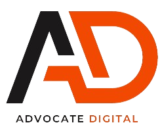In a realm where every click and impression matter, a landing page is a critical player as a visitor becomes a customer. To unlock success in this competitive landscape it is important for you to understand the intricacies and the role it plays in the online ecosystem.
A landing page is an independent web page practically designed for a targeted marketing campaign. Landing pages are created to change visitors into leads or customers. Whether it’s encouraging sign-ups, promoting a product, or driving a specific action, landing pages are the digital handshake that guides users toward a desired outcome.
Join us as we delve into the intricacies of landing pages, exploring their significance, components, and the transformative impact they can have on businesses of all sizes.
The Purpose of Landing Page.
The major objective of a landing page is to make way for conversions. We can achieve these in several ways, like promoting a limited time offer, or encouraging customers to make a purchase. Each landing page is kitted with a distinct marketing campaign, and it is customized to obtain predetermined objectives, which becomes a powerful tool for driving targeted actions.
Attributes of Effective Landing Pages
– Clear and Compelling Headline.
Once you arrive on a landing page the first thing that you see is the headline, and clear, concise, and compelling headlines leave a good impression on the guest. Your headline sets the tone for the visitor and reveals the primary value proposition. An intricate headline grabs the attention of your user and motivates users to explore your pages further.
– Engaging Visuals.
Visual elements are very important in captivating and retaining users’ attention. Using high-quality images, videos, or graphics to accompany the overall message enhances the user’s experience. Engaging visuals must align with the brand identity and goals, while evoking emotions that the target audience can relate to.
– Concise and Compelling copy
When writing on a landing page, it is crucial for the copy to be concise, compelling, and related to the campaign’s goals. Make sure to legibly communicate the profits of the offer, product, or service. When we use persuasive terminologies, we guide visitors toward taking the right action, whether it’s filling out a form or buying something.
– Persuasive Call-to-Action (CTA).
A compelling call-to-action (CTA) is the backbone of a landing page. Your CTA should be strikingly displayed, by using convincing language, that clearly explains the next step. It could be a button, form, or link, but most importantly the CTA should be prominent and encouraging for users to act.
– User-Friendly Forms.
If your goal of the landing page is to collect data, the form is an important component. Your forms should be simple, asking for only necessary information. Conciseness is also key, because the longer the forms, the easier users get discouraged from completing the forms. Place your forms in strategic places to encourage conversions.
– Trust Indicators.
Trust is the golden currency in the digital space, and it is crucial for conversion. Trust indicators such as customer testimonials, reviews, security badges, or any relevant certifications, reassure users and build confidence in the reliability of your offer.
– Mobile Responsiveness.
Significant number of internet users access content on their mobile devices, so your landing pages must be mobile-responsive. The layout, visuals, and functionality should be optimized for an enjoyable experience across different devices.
The Importance of Landing Pages in Digital Marketing
- Conversion Rate Optimization.
The major objective of a landing page is to increase conversion rates. Sharing a focused and persuasive message with a specific campaign, helps visitors to take desired actions. Desired actions like buying a product, signing up for a newsletter, booking a service or downloading a resource.
- Targeted Campaigns.
Landing pages are customized to detailed marketing campaigns, that allows businesses to create targeted messages for different audience segments. This level of optimization ensures that users get a cohesive and easy experience, enhancing the likelihood of conversion.
- Better User Experience.
A well-designed landing page enhances the user experience by providing a clear and straightforward path to the information or action users are seeking. A clutter-free and purpose-driven layout minimizes distractions and keeps visitors focused on the campaign’s goal.
- Measurable Results.
With Landing pages, you can track the success of a campaign in a measurable way. With analytics and tracking tools, you can gather data on visitor behaviours, conversion rates, and other crucial metrics. Using this data-driven approach permits informed decision-making and continuous enhancement.
- Cost-Effective Marketing.
In digital advertising, every click comes at a price, so pushing traffic to a purpose-built landing page makes certain that your investment is maximized. A detailed landing page with a legible call-to-action reduces the risk of visitors leaving the page without taking the desired action.
- Improved SEO Performance.
A well-optimized landing page contributes greatly to search engine optimization (SEO) efforts. It aligns with targeted keywords and provides relevant content. landing pages optimizes a website’s visibility in search engine results, creating organic traffic.
- Aligning with Paid Advertising.
landing pages are important parts to campaign success, when running paid advertising campaigns. Ad clicks direct users to a specific landing page rather than a generic website homepage, giving an easy transition and strengthening the campaign message.
- Fostering Customer Relationships
Landing pages are not just transaction ground, they are fertile ground for building relationships. As a brand, when you deliver value and meet the needs of visitors, you can initiate a relationship that leads to repeat business and customer loyalty rather than a one-time transaction.
Types of Landing Pages.
1. Lead Generation Landing Pages.
These types of pages are created to collect user information. These landing pages typically have a form for guests to submit their details in exchange for a resource, newsletter, or other important content.
2. Click-Through Landing Pages.
Click-through landing pages are used in e-commerce to encourage visitors to go to the next page. It is a page without a form but a page that has clickable elements like a call-to-action button. A click-through page is the page before an important page, like the product page.
3. Product Launch Landing Pages.
These landing pages are designed specially to excite prospective clients or users, for new product launches. The page can promote key features, prompt visitors to make a purchase, join a waitlist or sign up for updates.
4. Event Registration Landing Pages.
When promoting events, landing pages are the focal point for registrations. Just as the name depicts, it’s a page where you inform people about an upcoming event and encourage them to join or register. Whether it is a physical or virtual event, this page provides the event details, and the registration process.
5. Thank You Landing Pages.
This is the page where you appreciate your visitor or clients for carrying out a task. Tasks like making a purchase, signing up, or filling a form. A thank you page confirms the action is complete and expresses gratitude.
In Conclusion:
In the world of digital marketing, landing pages are the bridges between campaigns and conversions. They guide visitors to take meaningful actions, like making a purchase, signing up for a newsletter, or engaging with your brand.
At Advocate digital, we specialize in creating impactful landing pages that promote your digital presence and drive results. Our team of professionals understands the nitty-gritty of effective landing page design and are invested in making sure that each landing page is a compelling invitation to your audience. Partner with us to elevate your digital presence with landing pages that persuade and drive success in the evolving world of digital marketing.

